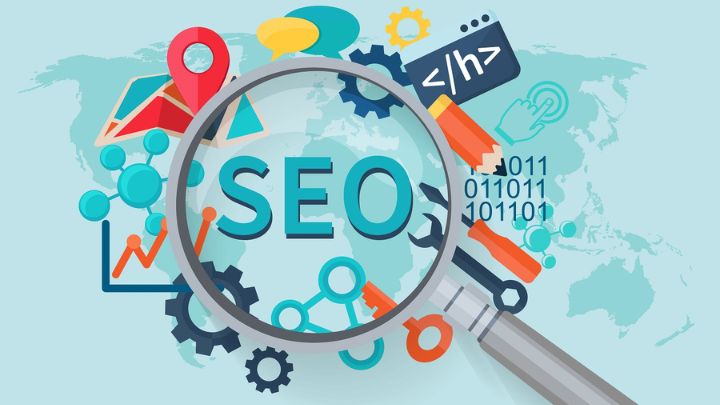
The Ultimate Checklist for On-Page SEO Optimization
Part 1: Laying the Foundation – Embarking on the SEO Quest
Imagine yourself, an intrepid adventurer, standing at the foot of a towering mountain: Mount Search Engine Optimization. Its peak, shrouded in mist, promises the riches of organic traffic and top rankings. Your trusty guide, this extensive checklist, will equip you to scale its treacherous slopes and emerge victorious. But before we begin the ascent, let’s dispel a common misconception: conquering SEO isn’t just about manipulating algorithms with robotic precision. It’s about creating a website that both humans and search engines find valuable, informative, and engaging. So, buckle up, for this journey combines technical sorcery with audience empathy, a generous splash of creativity, and a strategic dash of analytical thinking.
1. The Golden Nuggets of Keyword Research:
Before embarking on any adventure, we need a map. In the SEO realm, your map is composed of keywords, the search terms your target audience uses to navigate the digital wilderness. Tools like Google Keyword Planner and Ahrefs act as your prospecting picks, unearthing valuable insights into user search behavior. Don’t just chase shiny, high-volume keywords; prioritize long-tail keywords, specific phrases reflecting deeper search intent. These are the hidden gems that lead to targeted, engaged traffic.
2. Content is King (and Queen): Building Your SEO Stronghold
Now, it’s time to construct the foundation of your SEO stronghold: content. Remember, you’re not building a soulless fortress, but a vibrant city attracting visitors. Craft content that educates, entertains, and inspires, with quality, relevance, and originality as your guiding principles. Don’t forget, you’re writing for humans, not just bots. Inject your personality, tell stories, and provide unique perspectives. As for length, tailor it to your topic and target audience. Brevity might be the soul of wit, but in some cases, comprehensive guides provide superior value.
3. Mobile-First: Embracing the Smartphone Revolution
In today’s mobile-dominated world, thinking “mobile-friendly” is akin to preparing for a blizzard in flip-flops. It’s essential. Use Google’s Mobile-Friendly Test to ensure your website shines on any screen, from towering desktops to pocket-sized smartphones. Remember, frustrated explorers who encounter clunky mobile experiences are more likely to abandon ship, leaving your SEO efforts stranded.
4. Site Speed: The Enemy of Impatience
Imagine impatient explorers abandoning a slow, winding dungeon path. In the SEO realm, that’s what happens when your website takes ages to load. Optimize page load speed with tools like Google PageSpeed Insights and GTmetrix. Every second counts! Compress images, minify code, and leverage caching mechanisms to ensure your website sprints, not stumbles, towards top rankings.
5. Structured Data: Leaving Semantic Breadcrumbs
Think of structured data as semantic breadcrumbs, helping search engines understand your content like deciphering a complex treasure map. Use schema markup to highlight key information like recipes, events, and products. It’s like labeling your content with clear signs, making it easier for search engines to categorize and present it to the right audience.
Part 2: Optimizing Your Pages – Refining Your SEO Gems
With the foundation laid, let’s delve deeper and refine each page into a sparkling SEO gem:
1. Title Tags: Your Captivating Headlines in the Search Arena
Imagine your title tags as captivating headlines in the bustling search engine marketplace. Keep them concise (under 60 characters), keyword-rich, and accurately reflect your page’s content. Think of them as attention-grabbing shop signs luring curious explorers into your virtual establishment.
2. Meta Descriptions: Enticing Blurbs to Spark Curiosity
Consider your meta descriptions as persuasive blurbs summarizing your content’s value. Craft them in under 160 characters, including relevant keywords and a compelling call to action. Think of them as enticing window displays showcasing your content’s treasures and tempting explorers to peek inside.
3. Headings: Structuring Your Content Like a Well-Organized Library
Imagine exploring a labyrinthine library without clear signage. Confusing, right? Headings (H1, H2, H3) act as your content’s organizational beacons, breaking down information and guiding readers (and search engines) through your textual landscape. Use them strategically to highlight key points and improve readability.
4. Images & Alt Text: The Power of Visual Communication
Remember, visuals are powerful companions on any adventure. Optimize your images for Optimize your images for the web, keeping file sizes small for faster loading. Use descriptive filenames instead of generic ones like “IMG_1234.jpg”. Most importantly, include alt text, a concise description of the image that not only helps visually impaired users but also informs search engines about its content. Think of it as labeling your visual treasures, making them searchable and accessible to all.
5. Internal Linking: Connecting Your Content Landscape
Imagine a sprawling city without interconnected streets. Confusing, right? Internal linking acts as your website’s network of pathways, connecting relevant pages and helping both users and search engines navigate your content landscape seamlessly. Link naturally within your text, using relevant anchor text that accurately reflects the linked page’s content. This not only distributes “SEO juice” throughout your website but also encourages deeper exploration by your audience.
Part 3: Going Beyond the Basics – Unveiling the SEO Secrets
With the basic optimizations in place, let’s unlock the hidden chambers of SEO mastery:
1. Content Freshness: The Fountain of Youth for Your Website
Imagine a museum displaying only dusty relics from decades past. Not very appealing, right? Regularly updating your content with fresh information, insights, and engaging formats is crucial. Search engines favor fresh content as it signals relevance and value. Think of it as keeping your website vibrant and dynamic, attracting repeat visitors, and establishing yourself as a reliable source of information.
2. User Experience (UX): Prioritizing Your Explorers’ Journey
Remember, happy explorers become loyal visitors. Prioritize a user-friendly website with clear navigation, intuitive design, and fast loading times. Think of it as creating a welcoming and pleasant environment where users can easily find what they’re looking for. Invest in user experience (UX) optimization, as it not only improves SEO but also fosters user engagement and loyalty.
3. Technical SEO: Delving into the Underbelly of Your Website
While content and user experience are crucial, don’t neglect the technical aspects of SEO. Dive into the underbelly of your website and optimize aspects like robots.txt, sitemap, and URL structure. Ensure these are configured correctly to allow search engines to crawl and index your pages efficiently. Think of it as laying the invisible tracks that enable search engine bots to navigate your website effectively.
4. Local SEO: Claiming Your Territory in the Digital Jungle
If your business has a physical location, optimize your website for local searches. Claim your Google My Business listing, use local keywords throughout your content, and encourage customer reviews. Think of it as planting your flag on the digital map, making it easier for local explorers to find you.
5. Analytics & Tracking: Monitoring Your Progress on the SEO Journey
Just like any adventurer tracks their progress, it’s crucial to monitor your SEO journey. Utilize tools like Google Analytics and Search Console to track your website’s performance. Analyze data to identify areas for improvement, see which pages perform well, and understand how users interact with your content. Think of it as your treasure map, revealing insights and guiding your future SEO endeavors.
Advanced SEO Techniques:
- Technical SEO audits: Use specialized tools to identify and fix technical issues hindering your website’s performance.
- Structured data markup: Explore advanced schema markup techniques like FAQ schema and video schema for richer search results.
- E-A-T (Expertise, Authoritativeness, Trustworthiness): Focus on building your website’s E-A-T in your niche through high-quality content, backlinks, and a positive online reputation.
- Link-building strategies: Identify link-building opportunities through guest blogging, broken link-building, and industry collaborations.
- Content audits and refresh: Regularly assess your existing content and refresh it with new information and improved formatting.
SEO for Specific Niches:
- E-commerce SEO: Optimize product pages, category pages, and internal linking for better product discoverability.
- Local SEO for service-based businesses: Target local keywords, optimize Google My Business profile, and encourage local reviews.
- SEO for news websites: Focus on timely content, optimize for featured snippets, and leverage social media promotion.
- SEO for video content: Use relevant keywords in titles, descriptions, and captions, and transcribe videos for text-based search.
Beyond On-Page SEO Optimization:
- Off-page SEO: Explore link-building strategies, brand mentions, and social media engagement to boost your website’s authority.
- Technical SEO audits: Use specialized tools to identify and fix technical issues hindering your website’s performance.
- Technical SEO audits: Use specialized tools to identify and fix technical issues hindering your website’s performance.
- SEO case studies: Analyze successful SEO campaigns in your niche to learn from their strategies.
- Stay updated on the latest SEO trends: Regularly read industry blogs and attend conferences to stay ahead of the curve.
Remember, SEO is a Journey, Not a Destination:
This comprehensive checklist equips you with the tools and knowledge to navigate the complex terrain of SEO. But remember, it’s an ongoing journey, not a one-time destination. Stay updated on the latest trends, experiment with new strategies, and most importantly, focus on creating valuable content that your audience loves. With dedication and this guide as your compass, you’ll conquer the SEO labyrinth and claim your rightful place at the top of search engine results.
Bonus Tip: Share your knowledge and expertise! By engaging with your audience, creating backlinks from reputable websites, and actively participating in online communities, you’ll further strengthen your SEO foundation and build lasting relationships with your audience.
Do I need expensive tools for keyword research?
Not necessarily! While tools like Ahrefs offer advanced features, free options like Google Keyword Planner and Google Trends can help you identify relevant keywords for your target audience.
How long should my content be?
There’s no one-size-fits-all answer. Focus on providing valuable information in a clear and concise way. Shorter content might work for quick answers, while comprehensive guides might be better for complex topics.
Is mobile-friendliness really that important?
Absolutely! Over half of all internet traffic comes from mobile devices. A website that isn’t mobile-friendly will alienate users and harm your SEO performance.
How can I make my website load faster?
Optimize image sizes, minify code, and utilize caching mechanisms. Tools like Google PageSpeed Insights can help you identify specific areas for improvement.
What’s the deal with structured data?
Think of it as labeling your content for search engines. By using schema markup, you help them understand your content better, potentially leading to richer search results.
How long can my title tags be?
Ideally, keep them under 60 characters to ensure they display fully in search results. Remember, they should be concise, keyword-rich, and accurately reflect your page’s content.
What if I can’t fit all the important information in the meta description?
Prioritize the most compelling aspects of your content and include a call to action to encourage users to click.
How many headings should I use?
Use them strategically to break down your content and improve readability. Don’t force headings for every small subsection, but they’re crucial for longer pieces.
Are alt texts really necessary for all images?
Yes! They help visually impaired users understand the images and also inform search engines about their content.
How often should I link to other pages on my website?
Don’t force it, but use internal linking naturally where relevant. It helps users navigate your content and distributes “SEO juice” throughout your website.
How often should I update my content?
Regularly updating with fresh information shows search engines your website is active and relevant. Aim for consistency and focus on providing value to your audience.
What are some tips for improving user experience (UX)?
Clear navigation, intuitive design, fast loading times, and high-quality content are all essential for a positive UX. Prioritize user needs and test different layouts to see what works best.
What’s the most important technical SEO aspect?
It’s hard to pick one, but ensuring your website is crawlable and indexable by search engines is crucial. Tools like Google Search Console can help you identify and fix technical issues.
How can I optimize my website for local searches?
Claim your Google My Business listing, use local keywords throughout your content, encourage customer reviews, and ensure your NAP (Name, Address, Phone number) is consistent across all online directories.
What tools can I use to track my SEO progress?
Google Analytics and Search Console are free and provide valuable insights into your website’s performance. Analyze data to identify areas for improvement and track your progress over time.



